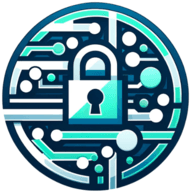In the digital age, security is paramount. As we navigate the vast landscape of the internet, we encounter numerous systems designed to protect our data. One such system that has gained prominence is the secure digital token system. This blog post aims to delve into the complexities of these systems, shedding light on their workings, benefits, and potential drawbacks.
Understanding Digital Tokens
Digital tokens represent a significant shift in how we perceive value and exchange goods in the digital world. They are unique pieces of data that signify ownership or access rights over a particular asset or service. Digital tokens can represent anything from a physical object to a service, or even a share in a company.
The creation of digital tokens involves a process known as tokenization. This process converts sensitive data into non-sensitive equivalents, known as tokens, which have no exploitable meaning or value. Tokenization enhances security by replacing sensitive data with non-sensitive equivalents, reducing the risk of data breaches.
Digital tokens come in various forms, each with its unique features and uses. Utility tokens, for instance, provide users with future access to a product or service. Security tokens, on the other hand, represent ownership in an external, tradable asset.
The Role of Security in Digital Token Systems
Security plays a crucial role in digital token systems. Without robust security measures, digital tokens would be susceptible to theft, fraud, and other forms of cybercrime. Secure digital token systems employ a variety of techniques to ensure the safety of tokens.
One such technique is encryption, which involves converting data into a code to prevent unauthorized access. Secure digital token systems also use secure socket layer (SSL) technology to establish an encrypted link between a web server and a browser, ensuring that all data passed between them remains private and integral.
Another security measure is two-factor authentication (2FA), which adds an extra layer of security by requiring users to provide two different types of information to access their tokens. This could be something they know (like a password), something they have (like a physical token), or something they are (like a fingerprint).
Advantages of Secure Digital Token Systems
Secure digital token systems offer numerous advantages. They provide a high level of security, reducing the risk of data breaches and cybercrime. By replacing sensitive data with non-sensitive tokens, they make it much harder for hackers to gain access to valuable information.
These systems also offer greater convenience. Users can easily access their tokens from anywhere, at any time, using a variety of devices. This makes digital tokens ideal for a wide range of applications, from online shopping to digital voting.
Moreover, secure digital token systems are highly scalable. They can handle a large number of tokens, making them suitable for large-scale applications. They also offer a high degree of flexibility, allowing users to create and manage their tokens in a way that best suits their needs.
Potential Drawbacks of Secure Digital Token Systems
Despite their many advantages, secure digital token systems are not without their drawbacks. One potential issue is the complexity of these systems. Understanding how they work and how to use them can be challenging for those unfamiliar with digital technology.
Another potential drawback is the risk of token loss. If users lose their tokens, they may be unable to access their assets or services. This is a particular concern for tokens that represent significant value, such as those used in cryptocurrency.
Finally, while secure digital token systems offer a high level of security, they are not completely immune to cybercrime. Hackers are continually developing new techniques to bypass security measures, and these systems must constantly evolve to stay ahead of these threats.
The Future of Secure Digital Token Systems
The future of secure digital token systems looks promising. As digital technology continues to advance, these systems are likely to become even more secure, convenient, and versatile.
One potential development is the integration of blockchain technology. Blockchain offers a high level of security and transparency, making it an ideal platform for digital tokens. By integrating blockchain, secure digital token systems could become even more robust and reliable.
Another potential development is the use of artificial intelligence (AI) and machine learning. These technologies could be used to enhance security measures, detect suspicious activity, and automate the management of tokens.
Conclusion
Secure digital token systems represent a significant advancement in digital security. They offer a high level of security, convenience, and flexibility, making them ideal for a wide range of applications. However, they also have their drawbacks, and understanding how to use them effectively requires a certain level of technical knowledge.
Despite these challenges, the future of secure digital token systems looks bright. With the potential integration of technologies like blockchain and AI, these systems are set to become even more secure and versatile. As we continue to navigate the digital age, secure digital token systems will undoubtedly play a crucial role in protecting our data and facilitating our online transactions.
Wrapping Up: The Journey Through Secure Digital Token Systems
Secure digital token systems are a fascinating and complex aspect of our digital world. They offer a unique blend of security, convenience, and versatility, making them an integral part of our digital transactions. Despite their complexities and potential drawbacks, their future looks promising with the potential integration of advanced technologies. As we continue to explore the digital landscape, understanding and leveraging these systems will be crucial.

